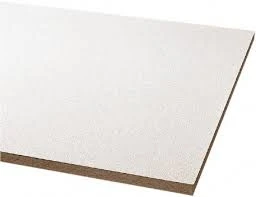10 月 . 06, 2024 11:42 Back to list
what is ceiling grid
Understanding Ceiling Grids A Comprehensive Overview
A ceiling grid is a framework installed in the ceiling of a space that supports tiles or panels, often used in commercial and industrial buildings. These grids are a fundamental component of suspended ceilings, providing a clean and aesthetically pleasing look while serving practical purposes.
The Structure of Ceiling Grids
Ceiling grids consist of horizontal and vertical metal bars, typically made of aluminum or steel. The primary elements are main runners, cross tees, and wall angles. Main runners run along the longest part of the room, while cross tees connect these runners, forming a grid pattern. This grid system allows for the easy installation of ceiling tiles, creating a seamless appearance.
Types of Ceiling Grids
There are several types of ceiling grids available, including T-bar, concealed grid, and clip-in systems
.1. T-Bar Grid System The most common type, T-bar grids, use a simple T shape to form the grid. This design makes it easy for installers to place panels, which can range from acoustic tiles to decorative options.
2. Concealed Grid Systems This system hides the grid elements from view, providing a sleek and modern look. Ceiling tiles are clipped into place, maintaining an uninterrupted ceiling line.
3. Clip-In Systems These systems involve tiles that are clipped into the grid framework, allowing for ease of access to the space above the ceiling. This feature is particularly beneficial in commercial settings where maintenance and changes to electrical or plumbing systems may be necessary.
Benefits of Ceiling Grids
what is ceiling grid

Ceiling grids offer numerous benefits, making them a popular choice in various applications
- Aesthetic Appeal They provide a tidy and uniform appearance, enhancing the overall design of a room. With numerous tile options, including colors and textures, the design possibilities are extensive.
- Sound Absorption Many ceiling tiles used in grid systems are designed to absorb sound, making them ideal for offices, schools, and hospitals where noise reduction is essential.
- Access to Utilities Ceiling grids create a false ceiling that allows easy access to wires, ductwork, and plumbing. This accessibility simplifies maintenance and repairs, reducing downtime in commercial settings.
- Energy Efficiency Installing a ceiling grid can improve the energy efficiency of a building. A suspended ceiling creates an insulating layer, potentially lowering heating and cooling costs.
Installation Considerations
When considering the installation of a ceiling grid, it's crucial to analyze the space’s height and the desired type of ceiling tiles. Proper installation is essential to ensure the grid remains level and securely supports the tiles. Hiring professionals with experience in ceiling grid systems can help avoid common pitfalls and ensure a quality finish.
Conclusion
In conclusion, ceiling grids are an essential aspect of modern architecture and interior design. They combine functionality with aesthetic appeal, making them a practical choice for various environments. Understanding the different types of ceiling grids and their benefits can help property owners and designers make informed decisions that enhance both the look and performance of their spaces. Whether for homes, offices, or larger facilities, ceiling grids continue to play a significant role in creating efficient and attractive interiors.
-
Revolutionizing Interior Design with Ceilings t grid Suspended SystemNewsOct.29,2024
-
Revolutionizing Ceiling Design with ceiling access panel with Gypsum Tile WaterproofNewsOct.29,2024
-
Revolutionizing Interior Design with PVC Gypsum Ceiling: A Comprehensive GuideNewsOct.29,2024
-
Elevating Interior Design with High quality Mineral Fiber Ceiling TilesNewsOct.29,2024
-
Revolutionizing Interior Design with PVC Gypsum Ceiling: A Comprehensive GuideNewsOct.29,2024
-
Elevating Interior Design with High-Quality Mineral Fiber Ceiling Tiles: A Comprehensive GuideNewsOct.29,2024







